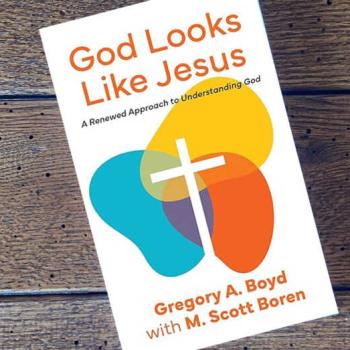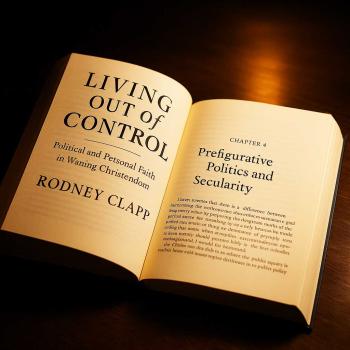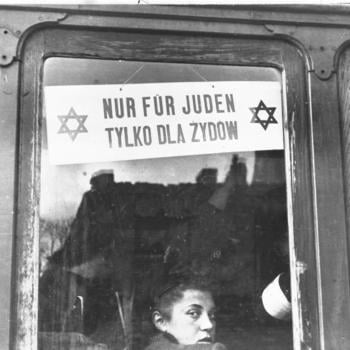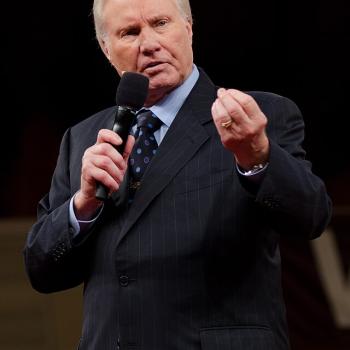What Is “Fundamentalism?” A Personal and Professional Perspective
*Note to would-be contributors: Lately a lot of commenters here have been ignoring my rules. Please don’t. If you choose to contribute a comment or question (or both) keep it relatively brief (no more than 100 words), on topic (relevant to what I actually wrote to which you are responding), civil and respectful in language (not argumentative or hostile), clear of any photos or links, and do NOT attempt to misuse my blog to promote your own agenda, worldview, political perspective, religion, etc. Lately I have been deleting many comments that are overly long, too detailed, argumentative, and that clearly are intended to promote an alternative point of view to my own. You may disagree with what I write, but stick to one point and keep it brief. Only write one comment per day per blog post. This is not a discussion board; respond only to me.*
What is “fundamentalism?” If you asked that in, say, 1910 or 1915 you would get a fairly simple and correct response. It was a reaction to rising liberal theology in British and American Christian churches and educational institutions. It was a somewhat militant (not violent) defense of conservative Protestant thought. It was an attempt to identify and promote certain traditional Christian beliefs as essentials of authentic Christianity. The lists varied but usually included the virgin birth of Christ, the inspiration of the Bible, Jesus’s deity and resurrection, etc. Most of these early fundamentalists were Baptists and or Presbyterians. Soon, however, people of other traditions joined the fight for “the fundamentals.” Among them were Congregationalists, Pentecostals, Wesleyan-Holiness people, etc.
The terms “fundamentalism” and “fundamentalist” were already in circulation before 1920, but around that year several conservative American Christian journalists began to use it to name a movement to either rid American Christian denominations of theological liberals (see my recently published book Against Liberal Theology published by Zondervan) or separate from denominations that would not rid themselves of liberal theology.
Several fundamentalist organizations were founded including the World Fundamentals Association. Some really conservative, orthodox Protestants who had sympathized with early fundamentalism were shocked to discover that they were on the “outside” of fundamentalism, labeled as “liberals” by the increasingly rigid, angry, militant (not violent) fundamentalists in their own denominations and schools. A case in point was Augustus Hopkins Strong, one of the most influential conservative Protestant theologians of the early 20th century. He was considered liberal by many fundamentalists and fundamentalist by many liberals.
People like Strong tried to stand “in the gap” between 1920s fundamentalism and liberalism, but public attention gravitated toward the extremes (as is usually the case in American public life and thought).
A great turning point in the public perception of fundamentalism happened in 1925 with the infamous “Scopes Monkey Trial” which was the first event (actually a days-long court case in Dayton, Tennessee) broadcast coast-to-coast by radio. The reason it drew so much attention was that the prosecutor against the teacher John Scopes who allegedly violated a state laws against teaching evolution, was one of America’s leading statesmen and politicians, William Jennings Bryan, who had been President Wilson’s Secretary of State and was the Democratic candidate for President twice. And the defense attorney was famous attorney and religious skeptic, probably an agnostic, Clarence Darrow. Both were celebrities, almost household names. And the main journalist writing about the trial and its cultural and religious context was H. L. Mencken, an agnostic reporter and news commentator, who daily made fun of the people of Tennessee and Bryan.
The outcome of the trial was a huge defeat for fundamentalism in national public perception. However, that was the case mainly in the northeast, upper Midwest, and west coast metropolitan areas of the U.S. In the South, especially, the perception was different. The case had been won by Bryan, Scopes was convicted, etc. (Read reliable reports of the trial, not the fictional account that most people know in the play “Inherit the Wind.”)
From 1925 on, American fundamentalism became increasingly separatistic. The Northern Baptist Convention fragmented, numerous small Baptist denominations were founded, each considering at least some of the others not doctrinally pure enough to be considered fully and authentically Christian. Fundamentalist Bible Institutes and fundamentalist publishing companies were founded. Fundamentalist publications poured forth. A problem was that these 1920s through 1950s American fundamentalists could not get together under one umbrella. And they became increasingly narrow, dogmatic, anti-intellectual, separatistic and suspicious even of each other—as to degrees of influence by liberal thought.
One case in point, of that, was the debate among fundamentalists about Bible translations, a debate that continues among fundamentalists. Most agreed that the Revised Standard Version was a product of liberal theological thought, but whether there was only one acceptable English translation became a point of angry controversy among fundamentalists with those who most loudly claimed the title of “true fundamentalists” rejecting all but the “Authorized Translation,” the “King James Version.”
Throughout much of the 20th century American fundamentalism (and there was little of it outside the U.S. except what was exported from it) was ignored by the mainstream media and movers and shakers of the mainline Protestant establishment which included the denominations of the Federal Council of Churches which had great influence on even American government.
During this time (mid-20th century) one could find self-identified fundamentalists scattered throughout most of the so-called mainline Protestant denominations, but many, perhaps most fundamentalists (in the U.S.) created their own almost underground subculture. But it was a fragmented subculture. And it was an angry subculture identified largely by what they were against.
During the 1940s and into the 1960s “neo-evangelicals” emerged as an alternative to both fundamentalism and liberalism. (Wherever I say “conservative” or “liberal” here I am referring to theology, doctrine and interpretation of the Bible, but also closeness or openness to modern culture and society.) The neo-evangelicals were conservatives, definitely not liberals, but leading fundamentalists considered them too “infected” by liberalism. The extent to which the neo-evangelicals separated from fundamentalism ideologically is still much debated. But the leading fundamentalists such as Bob Jones criticized them for allegedly not adhering to separationism, which had become a hallmark of American fundamentalism. “Biblical separationism” meant not having Christian fellowship with anyone who claimed to be Christian but was doctrinally impure which included, for example, believing in the modern scientific belief about the age of the earth.
During the middle of the 20th century, there were different types of fundamentalists in Great Britain, Canada, and the U.S. They agreed on much, but disagreed vehemently on some matters such as Pentecostal “gifts of the Holy Spirit,” mass evangelism, Bible translations, race relations, and, of course, the “end times.” Dispensationalism (look it up) became a kind of informal dogma among most American fundamentalists except those of a Reformed-Presbyterian mindset. However, even some of the latter adopted dispensationalism and promoted it as biblical truth.
For the most part, in the U.S. especially, fundamentalists stayed out of politics, except in the South, and adopted a mindset that politics was dirty, corrupting, and largely controlled by secularist modernists. And, after all, “Jesus is coming soon,” so why bother with trying to change this world (meaning governments)?
Fuller Theological Seminary emerged as the flagship institution for the neo-evangelical crowd that did not want to be identified as either fundamentalist or liberal. The neo-evangelical flagship publication emerged as Christianity Today (although there were others such as Eternity). Fundamentalists had their “Sword of the Lord” tabloid and others like it.
In the 1960s the president of Fuller Seminary publicly described American fundamentalism as “orthodoxy gone cultic.” A kind of theological war began between the neo-evangelicals and the fundamentalists. Mega-church pastor and radio preacher Jerry Falwell emerged as a leading spokesman for a new kind of fundamentalism that would be anything but the public stereotype of a fundamentalist “hick.” During the 1970s and into the 1980s he emerged as a spokesman for “evangelical Christianity” by appearing on television talk shows such as the Phil Donahue show and claiming (at least implicitly) to speak for all true American Christians and especially for all evangelical Christians. The “face” he put on publicly was hardly that most people pictured when they thought of a fundamentalist.
Falwell began to organize fundamentalists to fight the devil, so to speak, of American cultural decadence. He was at least perceived, rightly or wrongly, as attempting to draw fundamentalism out of its underground subcultural existence into a fighting force called “evangelical Christianity” and even “the moral majority” of Americans—to transform American culture into a kind of theocracy led by theological and cultural conservative like himself.
Some traditional mid-20th century, separatistic fundamentalists refused to join Falwell in this and criticized him for it. But many jumped on his bandwagon. Finally they had hope of being a force to be reckoned with in American public life.
Strangely, about that time, the major mass media began to label Iran’s radical Islamic revolutionaries as “fundamentalists.” Until then, “fundamentalism” was solely a Christian identity; suddenly, in the popular media and mind, a fundamentalist was any religious nutcase who was dangerous in some way. All kinds of people, Christian and of other religious traditions, and some of no particular religious tradition, were being labeled “fundamentalists” by journalists and sociologists. Case in point: C. S. Lewis was described in a major news article as an “Anglican fundamentalist.” About that time I was teaching theology on the faculty of Oral Roberts University and read in the local press that he was a “fundamentalist.” I was shocked because I knew he was anything but a fundamentalist except in this new, very mushy, very uncertain sense of anyone who appeared to be a religious fanatic or even conservative.
Gradually, the category “fundamentalist” lost meaning; it became overly fluid and anything but a clear and distinct category or concept. But that was not only the case with “fundamentalist,” due to media ignorance, almost every theological and religious category without a literal, physical headquarters (such as the Vatican for Roman Catholics) lost clarity and distinctness.
Since the 1970s, at least, the concept and category “fundamentalism” and “fundamentalist” has suffered degradation (degrading as a clear and distinct concept and category). Most non-Southern fundamentalists dropped the label and began to call themselves “evangelicals” all the while functioning as fundamentalists, more or less. The post-fundamentalist, neo-evangelical concept and category began to thin out with fewer and fewer American Christians identifying with it. The National Association of Evangelicals which had once been robust and truly centrist began to lose focus as a clear alternative to fundamentalism and liberalism. The “inerrancy controversy” broke out among evangelicals with fundamentalists, calling themselves evangelicals, rushing in to defend the concept of “biblical inerrancy” as an essential of authentic Christian faith—especially among scholars.
I lived through all of this and was near the center of it all—from my seminary years (1970s) on. When, in the 1990s, I defended open theism as an evangelical option I was labeled a liberal and heretic by the new really fundamentalist “conservative evangelicals” who threatened my teaching job and career.
In the middle of all that change, I insisted on holding onto “fundamentalism” as a somewhat clear and distinct category even though that was extremely difficult with so many fundamentalists, many of them breaking away from the stereotypes of fundamentalism in worship style, dress, even use of modern Bible translations, calling themselves evangelicals. I recognized that under that veneer of being “contemporary” and “hip” they were really fundamentalists at heart and in mind.
Sometime in the 1980s a group of sociologists of religion decided to settle once and for all who really are religious fundamentalists. They published a series of massive books based on their research. I laughed at them (from afar) because I recognized that, from the beginning of their project, they had already made up their minds that “fundamentalism” was a trans-religious phenomenon. They disconnected it from history and identified it as “religious anti-modernism.” But right then, many postmodern religious philosophers and theologians were reacting against “modernity” (e.g. Stephen Toulmin) but were anything but fundamentalists!
When I taught classes that included units on fundamentalism I went in search of what I considered “true Christian fundamentalists.” That was relatively easy as there was, in the same metropolitan area, a flourishing “old fashioned” fundamentalist Baptist seminary where all faculty members and administrators called themselves fundamentalists and strove to keep that mid-20th century “flavor” of fundamentalism alive. I invited one particular theology professor to speak to my classes and he did an excellent job. He was a true fundamentalist in the “clear and distinct,” historical-theological sense.
One evidence of that was what he said to me once after he spoke to my class. Knowing that I considered myself a “progressive evangelical” and even “postconservative evangelical” he kindly but firmly said that I would not be welcome to speak to any classes on his seminary campus. (He has since read this story and apologized and said he would now invite me to speak to one of his classes. That kind of disappointed me because I recognized that new attitude as something of a defection from good, old-fashioned fundamentalism of the mid-20th century variety.)
The problem with writing a book entitled “Against Fundamentalism” in the third decade of the 21st century is that there is no continuous, unbroken tradition-history (or historical tradition) that unites all fundamentalists. There are early prototypes of fundamentalism, but the category has lost its center. I could write a book against the remaining “hard shell,” separatistic Baptist fundamentalists that can be found almost everywhere in the U.S. if you know where to look. But they hardly own the label “fundamentalist” even though I wish they and others like them did still own it.
What I see is that relics, vestiges of real mid-20th century American fundamentalism have “leaked out” into all kinds of churches. I have spoken to adult groups in literally hundreds of churches in various parts of the U.S. and I can count on someone coming up to me afterwards, if not during the Q&A, and challenging my evangelical “credentials” because I am known to be not dispensationalist, not an inerrantist, not a young-earth creationist, not a Calvinist, not a believer in or user of the King James Bible, etc. It’s not enough that I believe in all the essentials of Christian orthodoxy; I’m a “liberal” because…whatever or however I don’t fit their preconceived idea of authentic, true-blue, conservative Christianity.
Here is one way I identify a fundamentalist church or individual. There are three types of Christian beliefs: essentials (dogmas), non-essentials (denominational doctrines), opinions (definitely non-essential even if interesting beliefs). Fundamentalists empty the “opinion” category and move everything they believe into the “essentials” category. (Some moderate fundamentalists will leave some non-essentials in the middle category.) Liberals, on the other hand, move everything into the “opinion” category, leaving the essentials category virtually empty. (I’m talking about doctrines here, not ethics.) Moderates are those who make serious, thoughtful effort to put the right beliefs in the right categories. We are very few.
However…back to the question why I probably will never write “Against Fundamentalism”…true, blue fundamentalists have extremely little influence. They are no threat to anyone. Except…as they influence more moderate evangelical Christians through their books, radio programs, magazines, etc. But those people influenced by real fundamentalism are rarely real fundamentalists.
So, finally, a case in point. Is John MacArthur a real fundamentalist? I think there is no clear answer to that. Then who is? That’s hard to say. When I go looking for people who have some influence and clearly fit the profile of real fundamentalist I find they don’t call themselves fundamentalists or they don’t fit the historical-theological profile perfectly and would bristle at being labeled a fundamentalist. There are exceptions, of course, but they are hard to find and have influence mainly within a small subculture of mostly Baptists.
*Note: If you post a comment, do not name anyone or any organization as fundamentalist unless he, she or it uses that label.*













